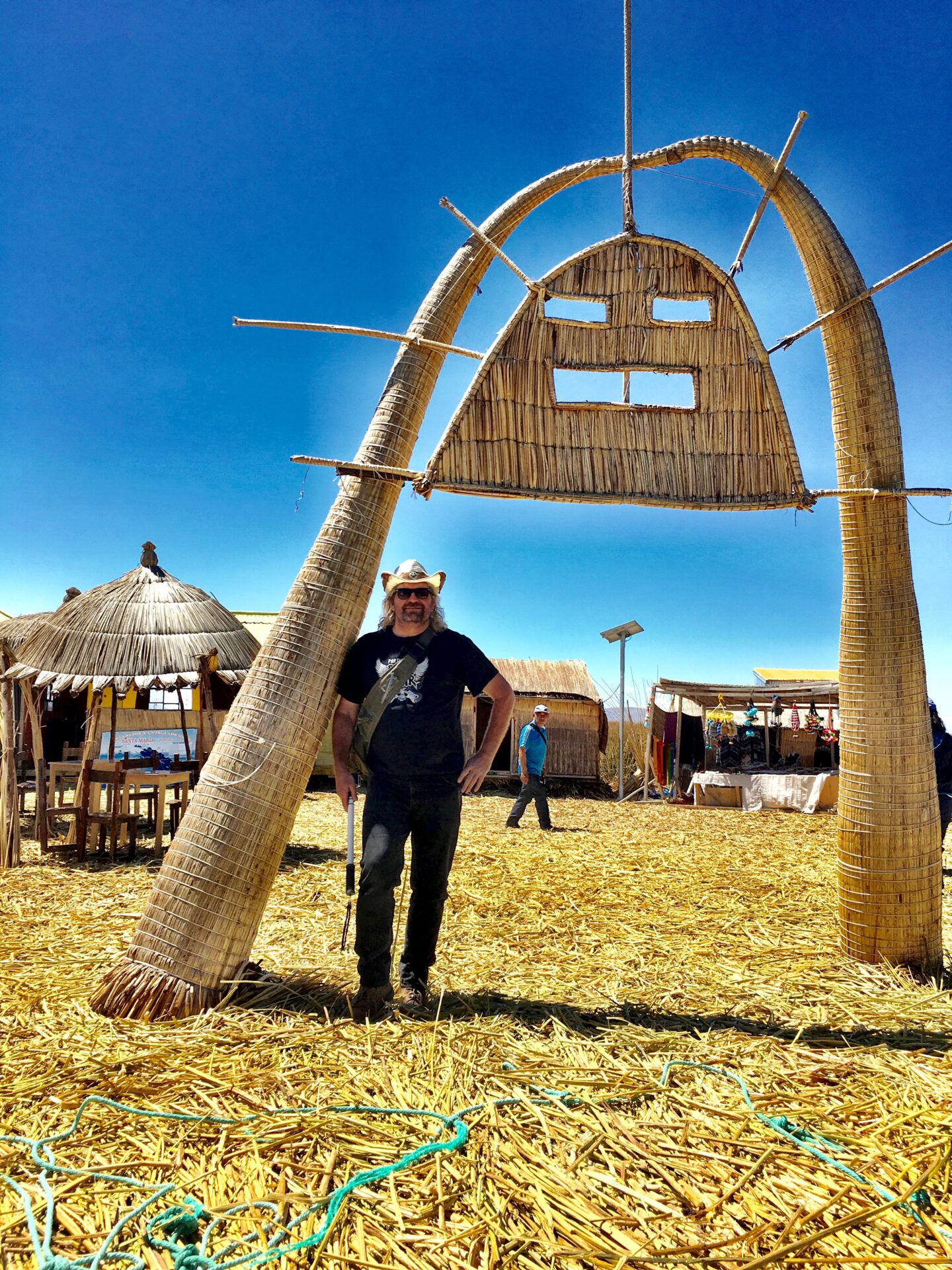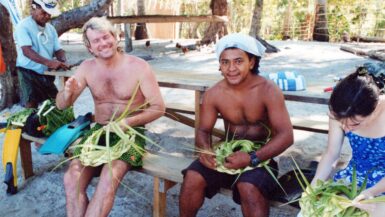Mention Titicaca almost anywhere except South America and you’ll likely get a snicker. This giant lake is one of the most important in Latin America and is found at the southern border of Peru with Bolivia sharing almost half of it. The word translated from Aymara actually means “puma rock” (which is less amusing than Titicaca), but it’s doubtful you’ll find any pumas anywhere in the area. Titicaca is considered to be the largest lake in South America by volume and boasts the highest altitude for a navigable body of water. It’s higher than Machu Picchu, so oxygen is thin, and it’s too cold to swim there. So, why go? I wondered. It turns out there’s lot of reasons. One of the biggest draws of the lake are a group of islands that are probably different than any place you’ve ever been. They’re man-made and called the Uros islands, named after the Uru people who inhabit them.
When I say man-made islands, I’m not talking about Dr. Evil kind-of-man-made islands that have “sharks with laser beams attached to their heads”. These floating land masses are made entirely of river reeds that grow in the lake. The root system of the reeds is naturally buoyant, and new reeds are constantly being scattered over the top surface so that when the old ones get waterlogged, the new ones keep the island afloat. It’s a strange concept, living on an island of floating grass, but the natives have been doing it for hundreds of years. Originally the locals could move their island if there was a conflict with another tribe, but now the islands are connected to each other and anchored to the bottom of the lake.
To visit the islands, you can grab one of the small ferry boats that run continuously back and forth or set up an inexpensive excursion that gets you a guide and a lift to the ferry. Once you get near the islands, there’s a small service fee for entry and you can see the reed boats sailing around the island. The banana shaped boats look like something from another planet with their strange painted animal heads fashioned from reeds jutting from the front of the vessel.
You’re greeted by the natives upon arrival and invited to disembark. Stepping onto the island feels a bit like walking on a straw covered mattress. Just a few feet below you is the lake and the reeds under your feet are the only thing separating you from the icy depths. Most of the islands are made up of just a few families who live in straw huts in the island. Though technology is visibly absent, there are often a few solar panels to provide the residents with electric light at night and to allow them an opportunity to watch the single local tv channel.
There’s a short “show” as well as an infomercial for their handmade products where the inhabitants explain how their island is created and maintained. Using props constructed from the reeds, the residents demonstrate how they live as well as giving you some insight to what they eat and how they cook without setting their island on fire. After a couple of dances, the locals sing a song and you’re permitted to check out their homes and even pose for a selfie with one of their colorful costumes. One of the most interesting things about these islands is their dependency on the reeds. They eat them, use them for medicine, build their boats from them, cool themselves, create souvenirs, make furniture and add on to the island itself. Almost everything in sight is constructed from these plants. The resident chickens and assorted farm animals walk around as if living on a pile of weeds is perfectly normal. You won’t see any cattle though. They’re likely to fall through the straw or eat the island,
After you’ve checked out the village, you’re invited to board the Islanders’ boat and sail past the neighbors. Most of the islands seem to be about the same size and somehow tied together so that you can get from one to the other like you would with moored boats. The community owned boat of the island is powered by two heavy oars that are nearly impossible to for newcomers to steer and row with. The locals sit or stand on the long reed pontoons that curve from the back to propel the boat. Most of the islands have no more than four or five families, so the entire “town” turns out to sing goodbye to you in every language they can muster. I was particularly amused by their version of “row, row, row your boat”. It all seems strange that they’re singing goodbye when you’ve been thinking that they’re bringing you back after a short trip. In reality, your ferry zooms ahead to pick you up on the end of your boat trip on a different island. The entire trip can be done in about three hours.
It’s doubtful you’ve ever seen anything like it. Almost every photo you’ll take looks like a South American version of Gilligan’s Island or some ancient civilization. Except for the TV antennas of course.






Leave a reply
You must be logged in to post a comment.